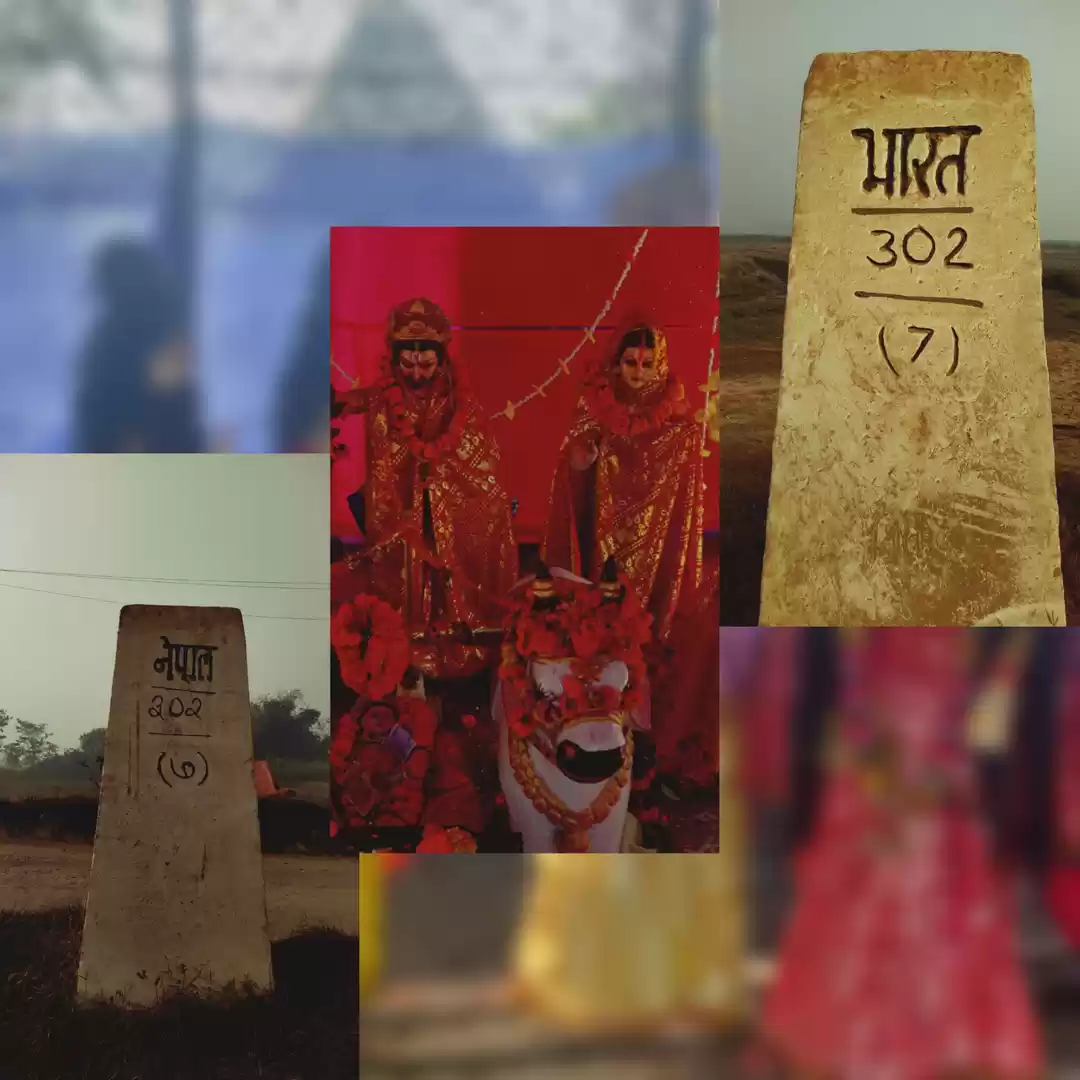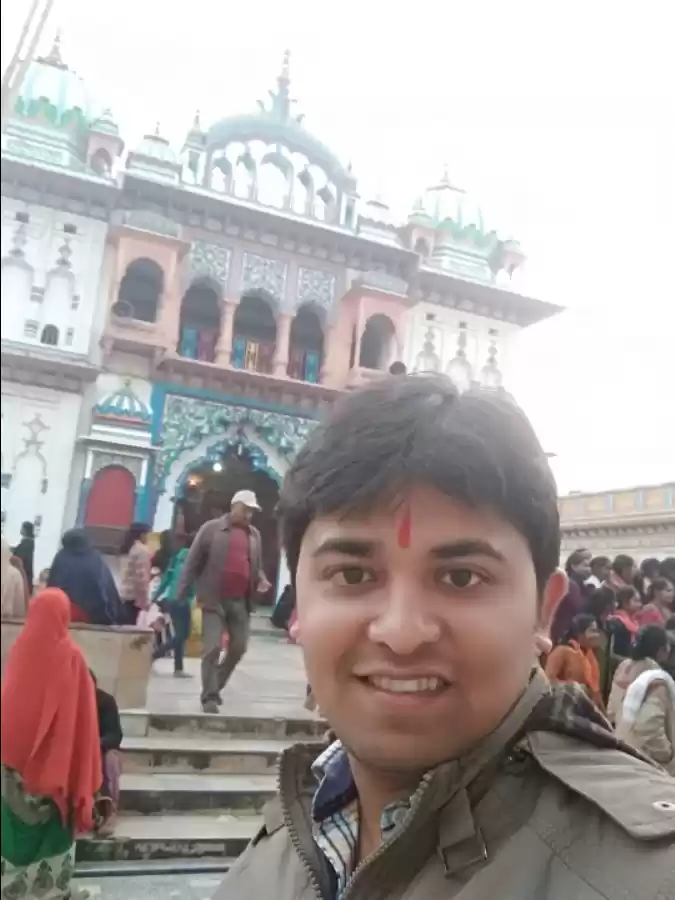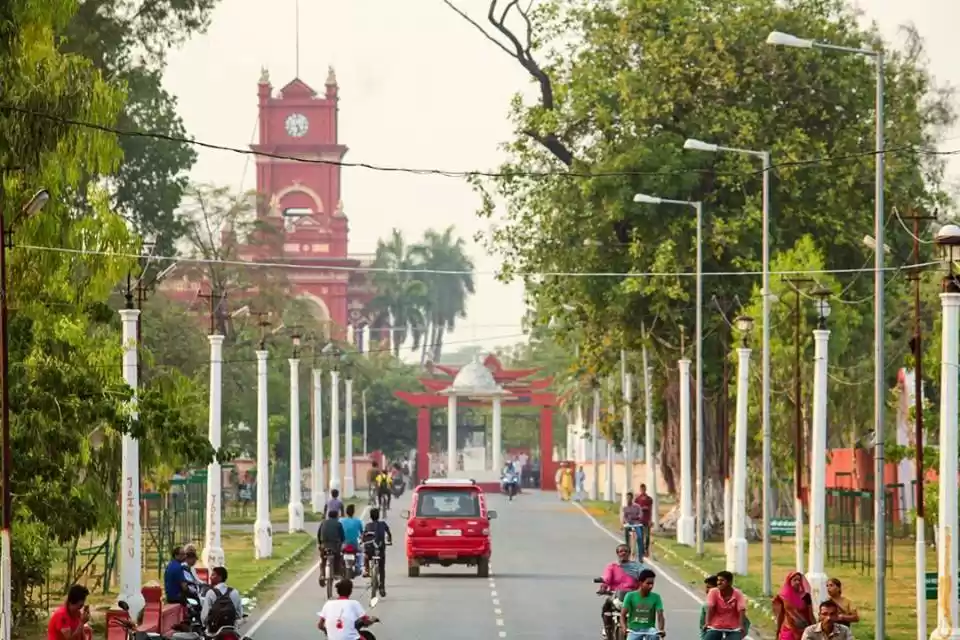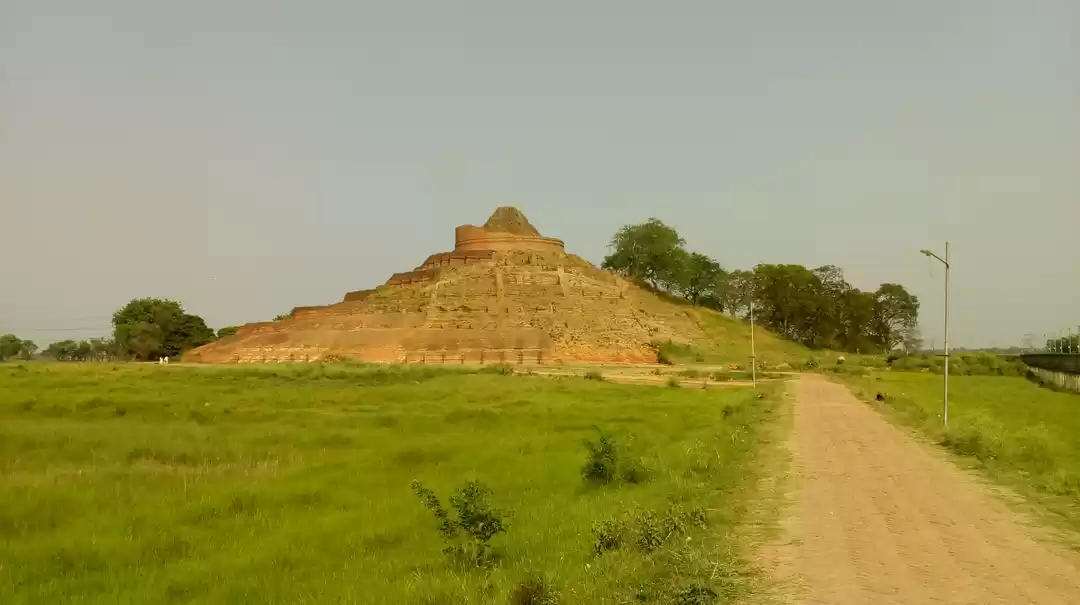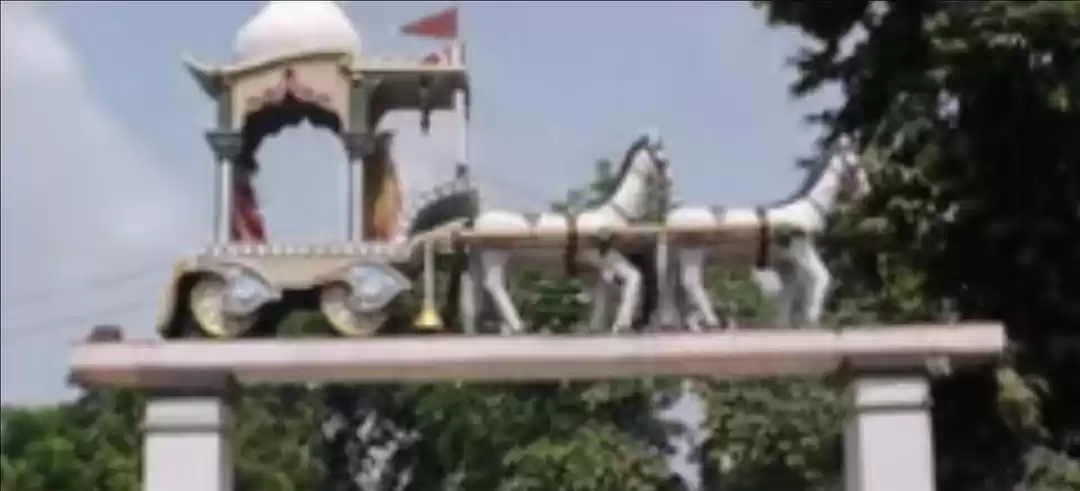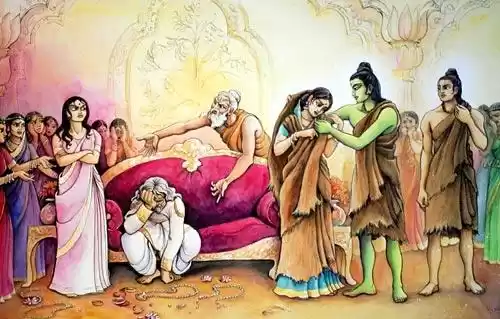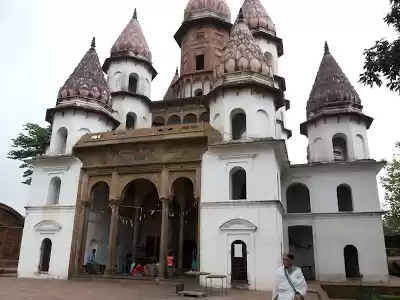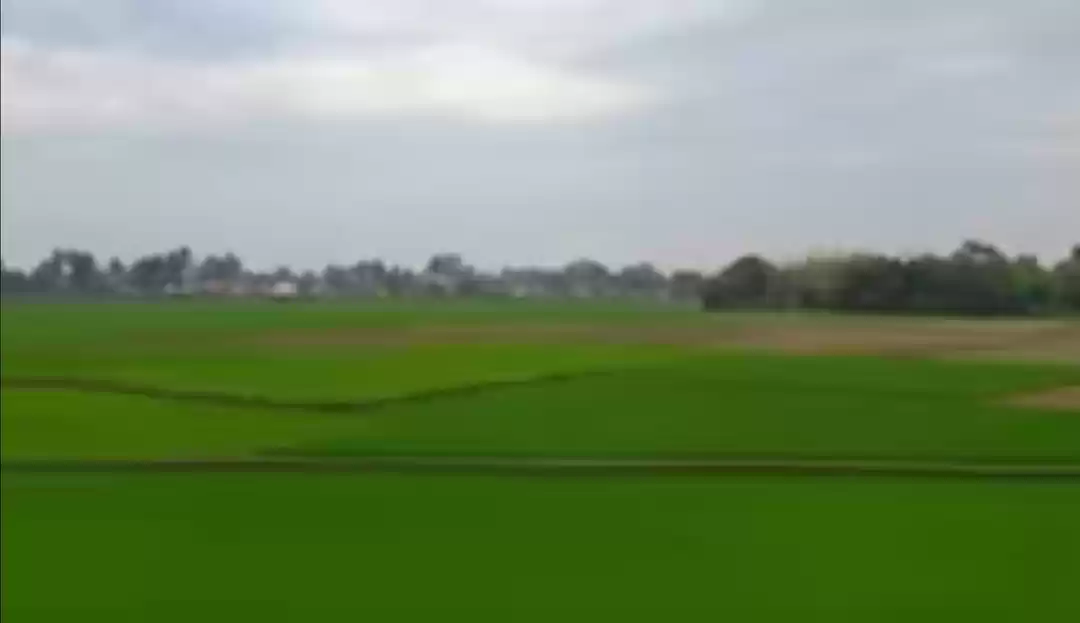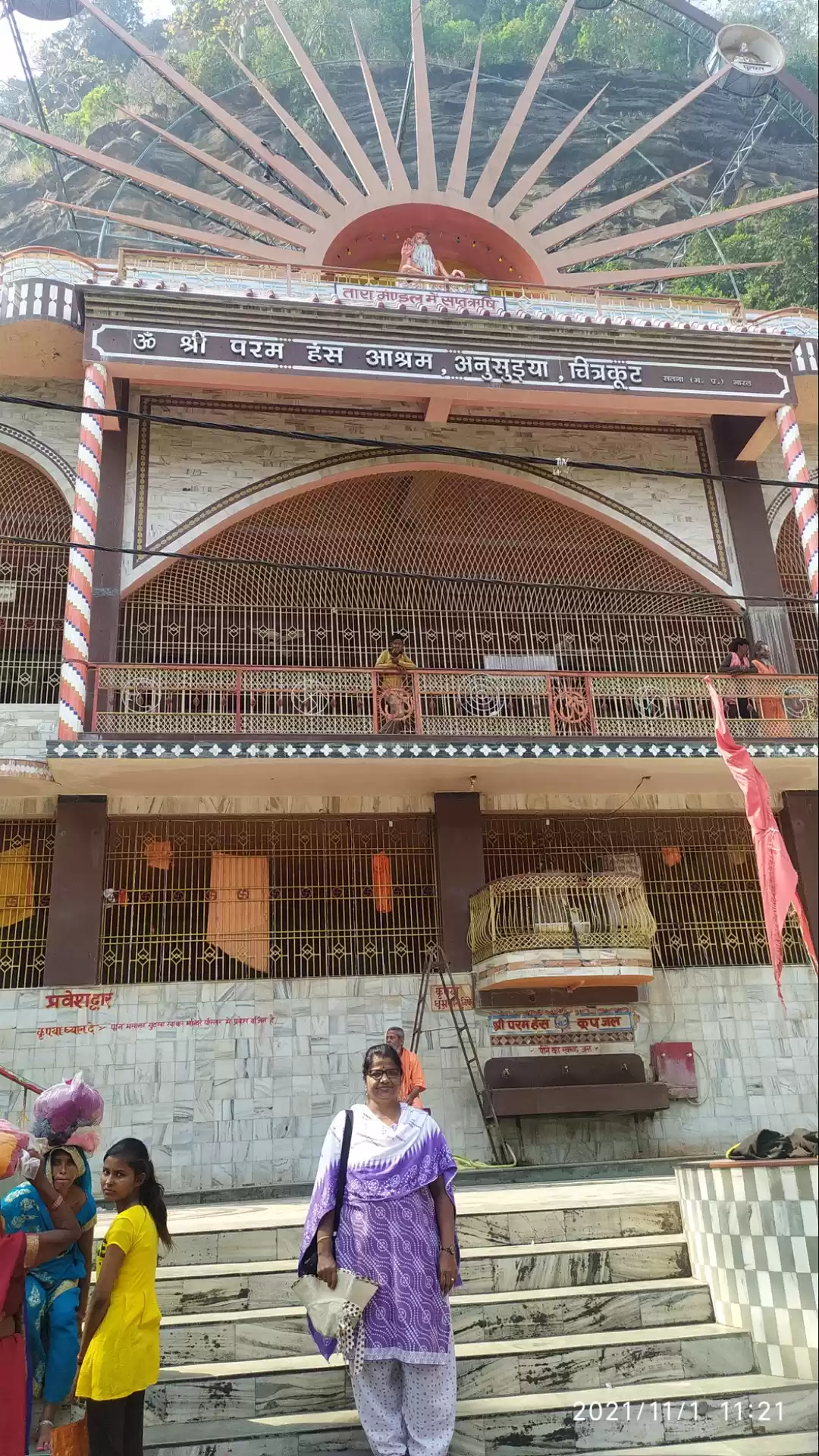
History comes alive and dances vibrantly right in front of your eyes, as you explore the sacred cities of Mithila- A region of southern Nepal and Northern India lying between the lower ranges of the Himalayas and the Ganges River, believed to be the place where Goddess Sita spent her childhood and place of her marriage with Lord Rama.
Mithila- The land famous for its unique culture, outstanding philosophy and beautiful folk traditions. From centuries the intellectuals from this region have established themselves, whether we talk about Yajnavalakya, Vachaspati, Vidyapati, Mandan Mishra, Gargi, Maitreyi, Bharti or Jagat-Janni Sita.
For uniqueness and stickiness with the art, culture, and traditions, this land of Mithila is well known.
Apart from its stickiness to culture and tradition, this region is well known for its religious practices and beliefs.
The Ramayana says the Mithila of Bihar as the home of Goddess Sita and as this region comes in the same belt of Bengal & Assam, where Shakti cult is mainly worshipped, people of Mithila too are Shakta in their original religious convictions. But since Shakti is the divine spouse of Shiva, Shaktism with the Shaivism form of convictions is mainly worshipped in the region of Mithila.
From the centuries people of Mithila are worshipping goddess, Durga in various forms. And subsequently, several temples were built supporting their beliefs by different rulers and pandits.
Here is a list of some of the well-established and must-visit Temples in Mithila, Bihar
Janki Mandir, Janakpur, Nepal

Janaki Mandir or The Temple of Goddess Janaki is a massive white marble domed building dedicated to Hindu goddess Sita in the Janakpur region of Mithila district in Nepal. In Hindu epic Ramayana, King Janak, known as Videha, a famed ruler loved and renowned for his reputation of delivering unbiased justice, is said to have ruled this area of Janakpur. Sita was King Janak's daughter whose name was Janaki and in a rather elaborate groom choosing ceremony, she decided on Lord Ram to be her husband and became Queen of Ayodhya.

A temple nearby, in the same vicinity, is said to be the exact spot where their marriage vows were solemnized.

The Janaki Mandir is a sprawling structure with palatial features, completely constructed from white marble. It is resplendent with domes at the top and the architecture, which showcase the interesting confluence of the Hindu, Nepali, Koiri and Mughal style of design.
Ugra Tara Sthan, Mahishi, Saharsa

This ancient temple dedicated to Goddes Ugra Tara has situated approx 15 Km from the district headquarter of Saharsa.
Locals worship the deity as Vashishtha Aradhita Tara, who was worshipped by saint Vashishtha, thereby associating this temple with the Ramayana period.
Locals also claim the Ugra Tara Sthan as a Shakti Peetha saying the right eye of Goddess Sati had fallen here.

Some historians, however, claim the idols of the Ugra Tara as Buddha's deity dating back to the Pala period.
They claim this Mahishi village as a pre-eminently Buddhist site known as Aapan-Nigam during the Buddha period. As a large number of Buddha images lying scattered on the temple premises and worshipped by locals as various Hindu gods and goddesses support their claims.

The temple, having the main entrance from the western side and a small opening on the eastern side of the sanctum sanctorum, was built by Rani Padmavati, the spouse of King Narendra Deo Singh some 500 years ago.

This Ugra Tara Temple, famous for the Tantrik cult of worshipping, draws devotees from different parts of the country and Nepal.
Janki Temple, Sitamarhi

The Janki Temple is believed to be the birthplace of Goddess Sita. The legends say this as a place where Goddess Sita was found as a newborn girl by King Janaka while plowing the field.

Later on, a big temple with a modern structure was built to commemorate that event. The presiding deity of the temple is Lord Rama, Goddess Sita, and Hanuman.
Nearby water pond famous as Janki Kund is believed to be the pond where King Janaka used to give a bath to the girl Sita.

As the great epic Ramayana has a predominant influence on the Hindus in India, this temple is thronged by devotees round the year. The festival Ram Navami and Janki Navami are the holy festivals of this place.
Punaura Dham, Sitamarhi

Located at a distance of 2 km from Sitamarhi, the Punarra Dham is famous for its grand Janki temple. It is believed that in ancient times, there was an ashram of the Pundariya rishi and here was the birth of Mother Sita in Janaki Kund.

However, it has been a controversy that for a year, who is the real Sita birthplace- Janaki Temple or the Punaura Dham?
But many Hindu devotees visit this temple around the year.
Uchaith Sthan, Madhubani

Uchaith Sthan has situated 25 Km from the district headquarter of Madhubani. In the garbha-griha, there is an idol in black stone of four-armed Goddess Durga, sitting in the yoga posture on the lion. Holding a Sword in the left hand and Wheel on the right hand, the goddess Durga is engraved by the Chakra( Wheel) on the sole of her feet too.

Legends say that after worshipping the Uchaith Durga, Lord Rama, Lakshman, and Vishwamithra went to Janakpur to take the part in Sita's Swayamvara (a practice of choosing a husband, from among an array of suitors) organized by King Janak. The great saint Vashishta and Parshuram also pleased Uchait Durga by penance. Pandavas too worshipped the Uchait Durga during the Navratri.

As per the legends, after getting the boon from Uchaith Durga only Kalidas became the greatest literary figure of all time. As the legend states, a group of scholars manipulated Kalidas' marriage with Princess Vidhyotma. When the princess realized that she had been betrayed, she asked Kalidas to leave and not come back until he gained authority in Sanskrit. So, Kalidas came to Uchaith Vidyapeeth in pursuit of knowledge. The Goddess blessed him with her divine power. It is believed that the original temple was built before 100 BC when the region was a jungle and Lord Rama, Sita, and King Janaka are known to have worshipped here. However, the present structure was built in 1960.

Throughout the year, a large number of devotees visit this temple for blessings.
Ahilya Sthan, Darbhanga

The temple of Ahilya Sthan is associated with the well-known legend of the sage Gautam and his wife Ahilya as told in the epic Ramayana and Puranas. Inside the Shrine there is a flat stone said to contain the footprints of Goddess Sita, wife of Ram, as the main idol of worship.
The temple is a masterpiece of art and ancient Indian architecture build between 1662-1682 during the kingdom of Maharaj Chhatra Singh and Maharaja Rudra Singh and believed to be the 1st Ram Janki Mandir of India.

According to Ramayan when Lord Rama was his way to Janakpur his feet touched a stone and it turned into a woman who was non-else but Ahilya. Her husband Gautam Rishi cursed the Ahilya to fun into stone. The temple is dedicated to Ahalya, the wife of Gautam Rishi.

Large fairs are held every year on the occasion of Ramnavami and Vivah Panchami, where a unique tradition can be seen. Devotees arrive in the temple carrying eggplant as an offering.
Kaali Temple, Madhubani

This Kaali Temple is believed to be the Gaushauni Ghar( Worshipping room) of King Madhav Singh. He was an ascetic King having a firm believe in Tantra.

The temple is an architectural marvel with beautiful carvings on the walls and ceilings. A giant Kaali idol is installed in the Garbha-griha.
Shyama Temple, Rajnagar, Madhubani

This Shyama Kali Temple lies in the ruined city of Rajnagar, showcases the panchayatan type of temple architecture. This white marble temple stands on a high stone platform of which the upper section is carved with white marble parapet which is highly decorated with carvings. The interior of the eastern wall contains the figures of rulers of Darbhanga Raj, whereas the western wall depicts the figures of some eminent pandit of Mithila. These figures surmount the twenty-two-line Sanskrit inscription in the Devanagari script.

The exterior surface is decorated with figures of the lions surmounted by lotus. The the lower portion of the wall is decorated with Ghata and flower designs.

Its Garbha-griha is square in a plan whose walls are well decorated with panels, niches, chaitya, window motifs, flower designs, etc. The garbhagriha enshrines a four-armed black Kaali of marble in standing posture, holding swords, a human skull, and krapana by her hands.

Adorned with metal crown, goddess Kaali stands by her feet upon the chest of reclining Shiva, who is adorned with serpent hoods crown and holds Damru in his left hand
Shyama Temple, Darbhanga
This grand temple of Shyama Kali is present in the Darbhanga district of Bihar. The story of the construction of this temple is astonishing to all who hear it. This temple of Maa Kali is made on the pyre of Maharaj Rameshwar Singh, the great seeker of the Darbhanga Raj family.
The people here believe that there is no such idol of Kali in India anywhere. The statue of the idol is supernatural and unforgettable.
This giant temple was founded in 1933 by Darbhanga Maharaja Kameshwar Singh, in which a huge statue of Maa Shyama is situated on Lord Shiva's thigh and the thorax. Mahakal on the right side of the mother Kali and statues of Lord Ganesha and Batuk are placed on the left.
In this magnificent statue of Kali, decorated with four hands, Khadg (Sword) in one hand on the left side of the mother and Mund (human skull) in the other, while the other hands are sitting in the position of giving blessings to their sons with both hands on the right side.
Kusheshwar Sthan, Darbhanga

The Kusheshwar place in the Darbhanga district is also known as the Baba Dham of Mithila. The place is situated about 70 km south-east of the district headquarter.

Here the temple of Kusheshwar Mahadev is located, where devotees from all over the Mithila, Nepal's neighboring districts, besides devotees from Bengal and Jharkhand continue to come here for years, but on the occasion of Shravani months, a large number of devotees came here and Jalabhishek(Water pouring on Lingam) Baba Kusheshwar Nath.
Kandaha Sun Temple, Saharsa




Chandika Sthan, Sonbarsa

Biratpur village under Sonebarsa block of this district is famous for an ancient temple of goddess Chandi. This village is also associated with King Birat of the Mahabharat age. During exile, the Pandavas had lived here for 12 years.
The tantric Scholars and devotees attach much significance to this Chandi temple, which is said to form an equilateral triangle with Katyayani temple near Dhamhara ghat and Tara temple at Mahishi.

During the Navratra people from distant places visit the village to offer prayers to the goddess of power.
Singheshwar Sthan, Madhepura

Singheshwar Sthan temple is situated in the Madhepura district of Bihar. It is said that this Shiva temple of Sinheshwar was built by Lord Vishnu himself at some age.
In the medieval period, the debate of Mandan Mishra and Shankaracharya also happened here.

This place has been named as Singheshwar, because of the ascetic of Shiringi Rishi who sacrificed his son-in-law for King Dasharath.
The temple is of old and historical importance. The lower part of the temple is connected to a mountain. There is no authentic document in relation to the Shivalinga establishment but many legends are popular in this regard.
Happy Travelling !!
Follow me on Facebook, Twitter & Instagram and stay updated and notified about the latest posts.
Disclaimer: Reproduction of any of the contents, including the photographs without prior consent/permission of the writer is strictly prohibited and a violation of the same will attract legal action.
















